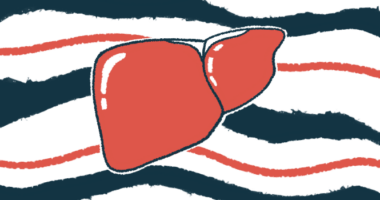Tirzepatide for weight loss treats fatty liver disease in Phase 2 trial
MASH cleared in 73.9% of high-dose patients with no new safety issues

Weekly injections of tirzepatide, an approved obesity and diabetes treatment, showed promise in people with nonalcoholic steatohepatitis (NASH) — now known as metabolic dysfunction-associated steatohepatitis or MASH — a serious form of fatty liver disease characterized by liver inflammation and scarring (fibrosis).
Significantly more patients on the weight loss medication than on a placebo achieved a complete resolution of MASH, with clinically meaningful reductions in liver fibrosis also observed.
These main findings of the global Phase 2 SYNERGY-NASH clinical trial (NCT04166773) were announced by Eli Lilly, tirzepatide’s developer, in a financial report covering the last months of 2023.
“Entering 2024, we remain focused on the opportunity in front of us, to help solve some of the most challenging healthcare problems in the world and make life better for millions of patients,” David A. Ricks, Lily’s chair and CEO, said in a company press release for the financial update.
Excessive weight, diabetes are risk factors for fatty liver disease or MASH
Non-alcoholic fatty liver disease, more recently classified as metabolic dysfunction-associated steatotic liver disease (MASLD), encompasses a group of disorders characterized by the buildup of fat in the liver that is not explained by excessive alcohol consumption.
Over time, MASLD can progress to MASH (previously, NASH), where those fat deposits lead to damaging liver inflammation. Left untreated, this progresses to fibrosis and then to cirrhosis, where permanent scarring significantly impairs liver function.
No approved treatments currently exist in the U.S. for MASH, whose risk factors include being overweight and having diabetes. For most patients, weight loss is the best way to ease this liver disease, along with managing co-existing health conditions like diabetes.
Tirzepatide is a medication used for weight management and to treat type 2 diabetes in the general population. It works by mimicking the activity of the GLP-1 and GIP hormones naturally secreted in the intestines after eating.
Specifically, it binds to receptor proteins of both hormones in the pancreas to boost production of insulin, the hormone that controls blood sugar levels. It also acts on GLP-1 and GIP receptors found in brain regions where hunger is regulated, thereby working to diminish appetite and promote satiety.
Lilly markets two injectable versions of the therapy under the brand names Mounjaro and Zepbound. Mounjaro is approved to control blood sugar in people with type 2 diabetes, while Zepbound is cleared for weight management in obese or overweight individuals with at least one weight-related medical issue.
Analyses from a substudy of a previous Phase 3 trial (NCT03882970) involving diabetic patients showed that tirzepatide led to a reduction in liver fat content, marking it as a possible treatment for fatty liver disease.
MASH resolved in patients treated with tirzepatide at one of three doses
Launched in 2019, the SYNERGY-NASH trial evaluated tirzepatide in 196 overweight adults, ages 18-80, with biopsy-proven MASH and stage 2 or 3 liver fibrosis, reflecting moderate to significant fibrosis that hasn’t progressed to cirrhosis.
Participants were randomly assigned to one of three doses of tirzepatide (5, 10, or 15 mg) or to a placebo, given as an under-the-skin (subcutaneous) injection once a week for one year.
The trial’s main goal was to evaluate the percentage of patients showing complete resolution of MASH without liver fibrosis worsening after 52 weeks of treatment.
Lilly announced that this goal was met, with significantly higher proportions of patients treated with tirzepatide at any of its three doses achieving MASH clearance.
This goal was achieved by 73.9% of patients treated with the highest dose, 63.1% given the 10 mg dose, and 51.8% on the lowest dose, according to a recent company webcast and its accompanying slides.
In comparison, MASH resolved in 12.6% of patients on a placebo.
All three treatment doses also were associated with clinically meaningful reductions in liver fibrosis (at least a drop of one stage) without a worsening of MASH, meeting a secondary trial goal.
Tirzepatide’s safety profile was consistent with that reported in previous studies in people with obesity or type 2 diabetes, where nausea, diarrhea or constipation, decreased appetite, vomiting, indigestion, and stomach pain were the most commonly noted adverse events.
The Phase 2 SYNERGY-NASH trial is expected to end this month.







